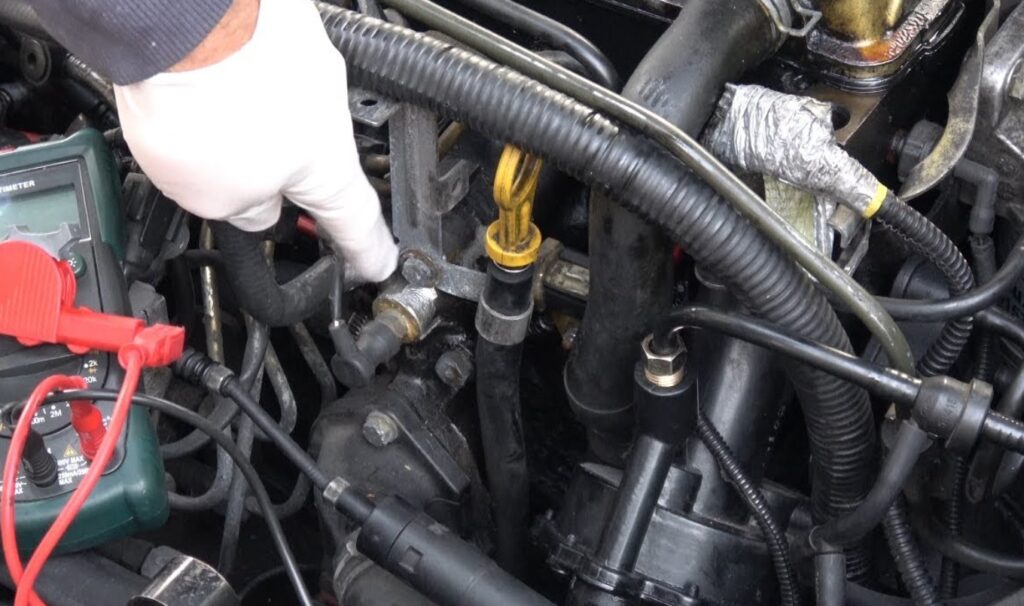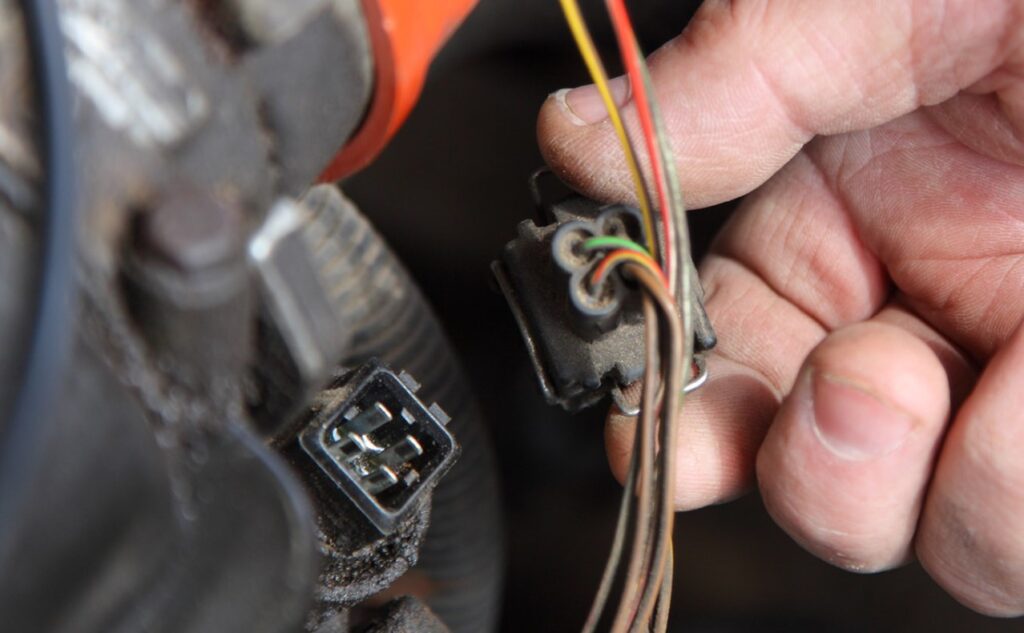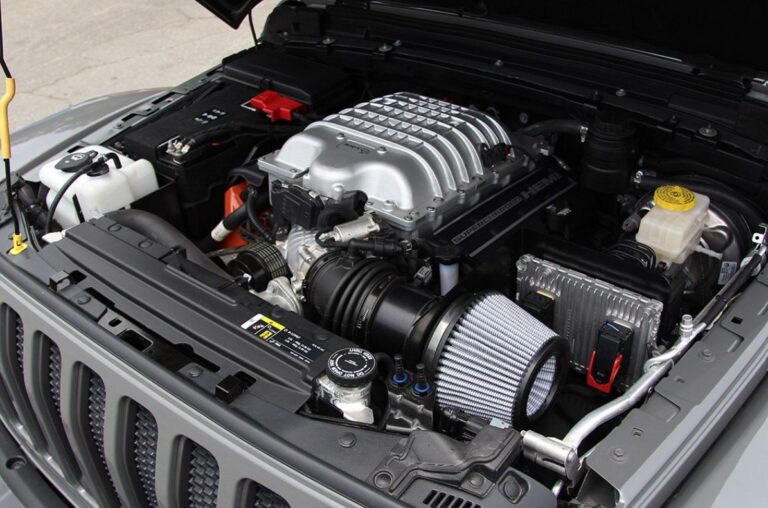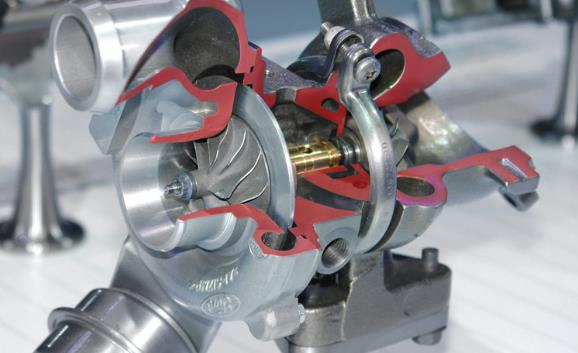Where Is The Engine Temperature Sensor Located? Answered
This article will explain Where Is The Engine Temperature Sensor Located? Understanding the location of the engine temperature sensor is crucial for vehicle maintenance and troubleshooting. This sensor plays a vital role in monitoring your car’s engine temperature, ensuring it operates within the optimal range.
In this article, we delve into the specifics of the engine temperature sensor’s location, its function, and related aspects to provide a comprehensive guide for both car enthusiasts and everyday drivers.
Key Takeaways
- The engine temperature sensor is typically located near the thermostat housing.
- Its exact position can vary depending on the vehicle’s make and model.
- Understanding its location aids in troubleshooting engine overheating issues.
- The sensor’s health is critical for accurate engine temperature readings.
Where Is The Engine Temperature Sensor Located?
The engine temperature sensor is generally found near the thermostat housing. This is often near the engine block or cylinder head. The exact location can vary significantly across different vehicle makes and models.
For instance, in many modern cars, the sensor is placed close to the top of the engine, providing easy access for maintenance and replacement.

Variations Across Different Models
The location of the engine temperature sensor can differ based on the car’s design. In some models, it’s positioned near the coolant outlet, while in others, it might be embedded within the thermostat housing itself.
High-performance vehicles or those with unique engine designs may have the sensor located in less conventional areas to best suit their cooling system’s architecture.
Importance of Location
The strategic placement of the engine temperature sensor allows it to accurately gauge the temperature of the coolant as it exits the engine. This data is vital for the engine control unit (ECU) to adjust the fuel injection, ignition timing, and, in some cases, variable valve timing for optimal engine performance and efficiency.
Engine Temperature Sensor Functionality
The engine temperature sensor, often a thermistor, changes its resistance with the engine’s coolant temperature. This change in resistance is translated into temperature readings, which are then sent to the vehicle’s ECU.
The Role in Engine Management
The ECU relies on these temperature readings to make critical adjustments to the engine’s operation. For instance, when the engine is cold, the ECU increases the fuel ratio to create a richer mixture for easier starting and smoother running. Conversely, as the engine warms up, the fuel mixture is leaned out for efficiency and emission control.
Symptoms of a Faulty Sensor
A malfunctioning engine temperature sensor can lead to various issues, including erratic temperature readings, poor fuel economy, and engine performance problems. In some cases, it might trigger a check engine light or cause the engine to overheat, signaling the need for immediate attention.
Impact of Sensor Location on Vehicle Health
The engine temperature sensor’s location not only affects its function but also its vulnerability to damage or wear. Being close to high-temperature areas, the sensor can degrade over time, necessitating regular checks and maintenance.

Accessibility for Maintenance
In most vehicles, the sensor’s location is designed for relatively easy access for maintenance and replacement. However, in some complex engine layouts, reaching the sensor might require additional disassembly, increasing the maintenance effort and cost.
Preventive Measures
Regular inspection of the engine temperature sensor and the surrounding area can preempt potential issues. It’s advisable to check for any signs of corrosion, wiring issues, or physical damage to ensure the sensor’s optimal performance.
Relevance in Different Weather Conditions
The engine temperature sensor’s efficiency is crucial in various weather conditions. In extreme cold or heat, the sensor ensures the engine operates efficiently, maintaining performance and preventing damage due to temperature extremes.
Cold Weather Operations
During cold starts, the sensor helps the ECU in enriching the fuel mixture, ensuring the engine runs smoothly despite the low ambient temperatures. This is crucial for preventing wear and tear on engine components during cold starts.
Hot Weather Performance
In hot conditions, the sensor aids in detecting overheating issues early. This is vital for avoiding engine damage due to excessive heat, especially in traffic or under heavy load conditions.
What Is The Engine Coolant Temperature Sensor?
The Engine Coolant Temperature (ECT) Sensor is a critical component in a vehicle’s engine management system. It measures the temperature of the coolant circulating through the engine.

This information is sent to the Engine Control Unit (ECU), where it’s used to regulate various functions such as fuel injection, ignition timing, and in some cases, the operation of the cooling fan.
The ECT sensor is usually a thermistor, a type of resistor that changes its resistance with temperature changes. Its accurate operation is crucial for the optimal performance of the engine, fuel efficiency, and emission control.
How Does An ECT Sensor Work?
An ECT sensor operates based on the principle of resistance change in response to temperature variations. As the engine coolant temperature changes, the resistance of the thermistor within the ECT sensor changes correspondingly.
This resistance change alters the voltage signal sent to the ECU. The ECU interprets these voltage variations as temperature readings. When the engine is cold, the sensor’s resistance is high, sending a low-voltage signal.
As the engine warms up, the resistance decreases, increasing the voltage signal. This continuous monitoring allows the ECU to make real-time adjustments to the engine’s operation for optimal performance under various operating conditions.
How Do You Know If Temperature Sensor Is Bad?
Identifying a faulty ECT sensor involves noticing certain symptoms. These include erratic or inconsistent temperature gauge readings, where the gauge fluctuates or reads unusually high or low temperatures.

Another indicator is poor engine performance, such as rough idling, stalling, or difficulty starting, especially in cold conditions. Increased fuel consumption and a noticeable decrease in fuel efficiency can also point toward a malfunctioning sensor.
Additionally, the ‘Check Engine’ light may illuminate on the dashboard. For a definitive diagnosis, a diagnostic scan tool can be used to read the ECT sensor’s output and check for error codes.
What Happens When Coolant Temperature Sensor Goes Bad?
When the ECT sensor fails, it can lead to several problems in the vehicle’s operation. One of the most immediate effects is inaccurate temperature readings sent to the ECU, leading to improper adjustments in fuel injection and ignition timing.
This can cause the engine to run either too lean or too rich, impacting fuel efficiency and increasing emissions. In severe cases, it can lead to engine overheating, as the ECU may not receive the correct information to activate the cooling fan or adjust the cooling system appropriately.
Additionally, a bad sensor can trigger the check engine light and store error codes in the vehicle’s diagnostic system, often leading to failed emissions tests and potentially serious engine damage if not addressed promptly.
Conclusion
In conclusion, the engine temperature sensor is a pivotal component in a vehicle’s engine management system. Its strategic placement and functionality ensure the engine operates within safe temperature ranges, enhancing both performance and longevity.
Understanding its location and role is essential for effective vehicle maintenance and troubleshooting. Regular checks and awareness of its condition can significantly contribute to a smoother and more efficient driving experience.
Top FAQ’s
How Can I Test My Engine Temperature Sensor?
You can test the sensor by measuring its resistance and comparing it to the manufacturer’s specifications. An OBD-II scanner can also be used to read the temperature sensor’s output and check for any related error codes.
Can I Drive with a Faulty Engine Temperature Sensor?
Driving with a faulty sensor is not recommended, as it can lead to poor engine performance and overheating, potentially causing significant engine damage.
How Often Should the Engine Temperature Sensor be Replaced?
There’s no set replacement interval for this sensor. It should be replaced if it fails or shows signs of malfunction. Regular checks during routine maintenance can help identify potential issues early.
Is Replacing an Engine Temperature Sensor Expensive?
The cost can vary depending on the vehicle model and the sensor’s location. Generally, it’s not prohibitively expensive, but accessibility can influence the labor cost.

Welcome to the exhilarating world of Matt Rex, a professional car racer turned renowned vehicle enthusiast. Immerse yourself in his captivating blog as he shares heart-pounding adventures, expert reviews, and valuable insights on cars, trucks, jets, and more. Fuel your passion for speed and discover the beauty of vehicles through Matt’s engaging stories and meticulous expertise. Join the ever-growing community of enthusiasts who find inspiration and expert advice in Matt Rex’s blog—a digital hub where the thrill of speed meets the pursuit of knowledge.



![Does Hyundai Digital Key Work With Iphone? [Explained]](https://www.turbochaos.com/wp-content/uploads/2023/12/Does-Hyundai-Digital-Key-Work-With-Iphone-768x483.jpg)



